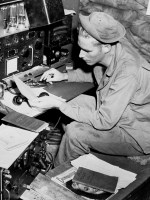 On this day in 1904, CQD was adopted by the Marconi Company as the official distress symbol for radio use. For those who do not know Morse Code, it is: — · — · — — · — — · ·. The reason for its use was that CQ was short for sécu, which was in turn short for sécurité, which means “security” but became short for “all stations.” It was an alert to everyone. They added the D for “distress,” so that CQD meant: “all stations: distress.”
On this day in 1904, CQD was adopted by the Marconi Company as the official distress symbol for radio use. For those who do not know Morse Code, it is: — · — · — — · — — · ·. The reason for its use was that CQ was short for sécu, which was in turn short for sécurité, which means “security” but became short for “all stations.” It was an alert to everyone. They added the D for “distress,” so that CQD meant: “all stations: distress.”
It wasn’t a good distress signal. The CQ signal was quite common. And B was very similar to D: — · · ·. So it was easy enough for a non-distress signal to be mistaken for a distress signal. Two years later, the international standard became SOS. It’s a much better choice between it is a very clear signal. Even for me (and I find Morse Code very difficult to hear intuitively), it stands out: · · · — — — · · ·.
One interesting thing is that at least CQD did mean something. But it wasn’t exactly memorable. People took to coming up with different phrases for it. For example: “Come Quick, Danger” and the charming “Come Quick — Drowning!” SOS, on the other hand, means absolutely nothing. It is just a distinctive sounding pattern. But it to was later given phrases like “Save Our Ship.”
Of course, all of this is just kind of weird. The first rescue that was accomplished via wireless communication was simply, “HELP.” I’m sure that with much more radio traffic having something clear and simple was helpful. But ultimately, seconds don’t matter — or if they do, you are out of luck. SOS did not help the Titanic. Although interestingly, they also transmitted CQD.





